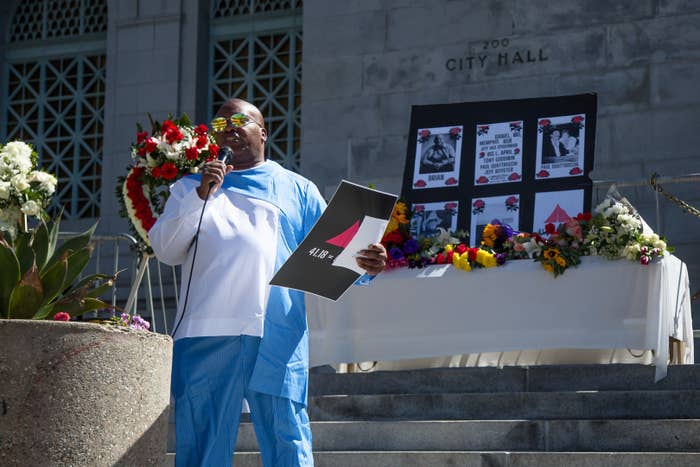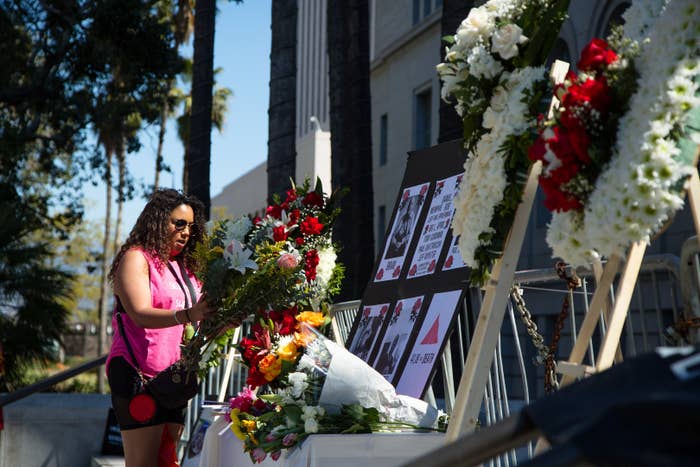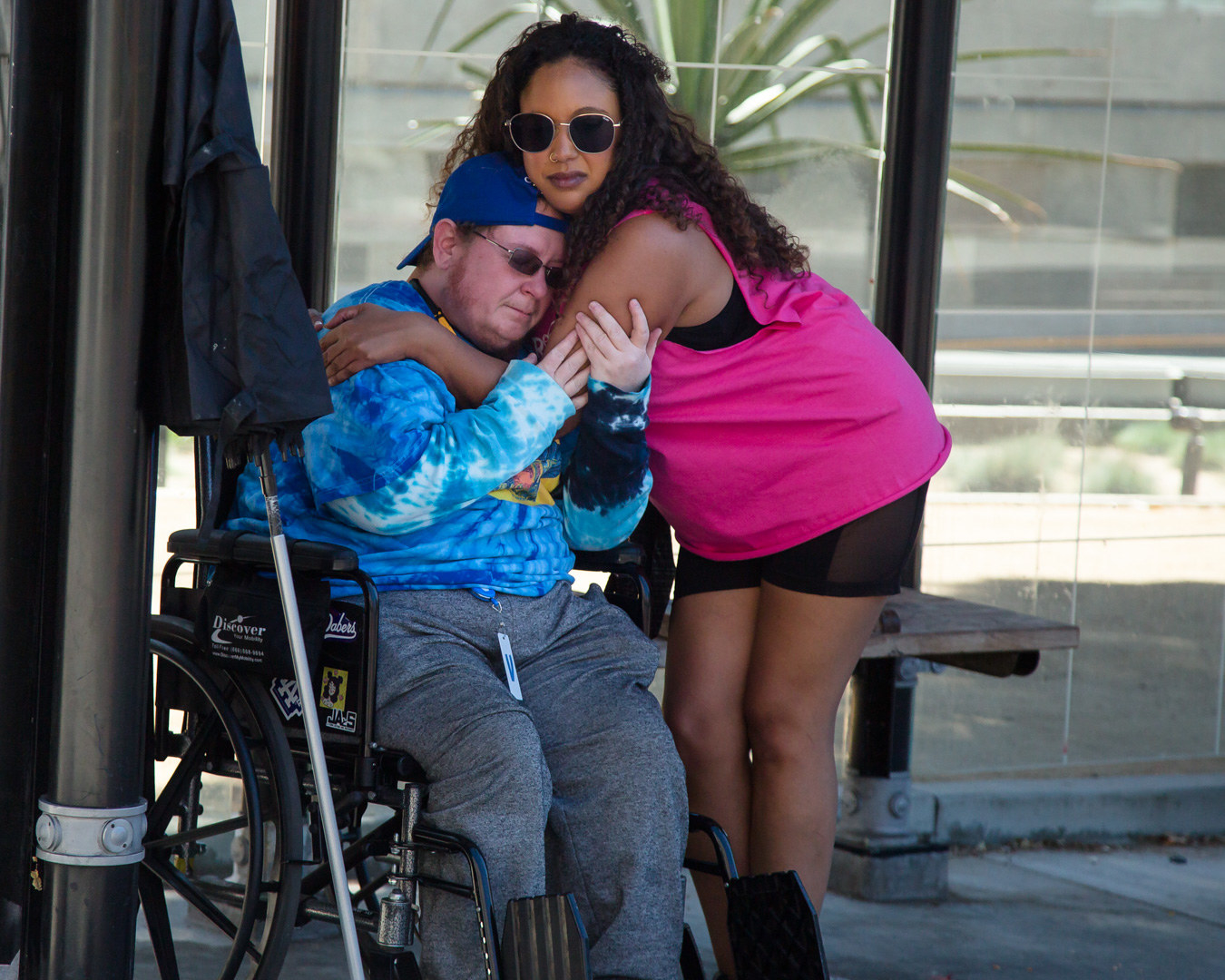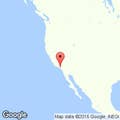
Theo Henderson was in a hurry. He was walking through Little Tokyo in Los Angeles and recognized a fellow person experiencing homelessness whom he knew, but in his haste, he didn’t say hi. The next day, Henderson watched the man’s body be zipped into a bag.
But it wasn’t the death that most disturbed Henderson; it was the reaction from people who continued to go about their day, ignoring what was happening right in front of them.
“They just walked on like it was every day as usual,” he said. “It made me realize how disconnected the housed community is.”
The image stayed with Henderson, a 48-year-old activist-in-residence at the UCLA Luskin Institute on Inequality and Democracy who is unhoused, so he decided to do something about it and began planning mobile memorials — called “Can You See Me?” — around the city to grieve his neighbors who have died and were homeless. Henderson said that at the memorial last year, people told stories about family members experiencing homelessness whom they had never publicly acknowledged before.
“A woman told me that her father was unhoused and she was ashamed of bringing it up. It got a lot of those conversations going,” he said.
People experiencing homelessness are dying at an increasing rate in Los Angeles. A preliminary count from the Los Angeles County Department of Medical Examiner-Coroner found that 1,612 people who were homeless died in 2021. Five years ago, that number was just under 1,000. Advocates believe 2022 will surpass last year’s numbers due to a lack of affordable housing and other support services.
All of this is more reason, Henderson said, to hold space for those to grieve.

As of 2020, the Los Angeles Homeless Services Authority reported that at least 63,706 people were experiencing homelessness in LA County. The 2021 homeless count was canceled due to the pandemic, so more current figures won’t be available until this year’s event in February is tabulated.
According to a report from the LA County Department of Public Health, the leading causes of death for people experiencing homelessness are drug overdoses, coronary heart disease, and transportation-related fatalities. Overdoses continue to be the leading cause of death because of the presence of fentanyl, a powerful synthetic opioid in the drug supply.
In March, dozens of people gathered in front of City Hall in downtown Los Angeles to commemorate those they’d lost. Flower arrangements lined the memorial as a white coffin lay in the center to represent those who died. A list of 25 names were read aloud while people cried, hugged, and eulogized their loved ones.
Michael Sintleton, a local artist, said the event humanized people who were unhoused while also providing a platform for those who knew them to speak about their impact.
“Theo [Henderson] does things that have meaning, that dignify and value a person's life,” he said.
Across the street, tents and other forms of shelter filled the sidewalk.

Dec. 21 is designated national Homeless Persons’ Memorial Day, and vigils are held throughout the country. Nathaniel VerGow, the deputy chief of systems at the LA Homeless Services Authority, said it’s been difficult to host this event over the last few years because of COVID-19. But VerGow said the mobile memorials Henderson organizes help put a human face to the issue of homelessness.
“I think every life deserves to be honored, and so I think it's fantastic that somebody is making the space to honor the lives of folks who are often not only forgotten but are denigrated and mistreated by our society,” he said.
Halcyon Selfmade, an activist, advocate, and artist, moved to Los Angeles in 2018 after being evicted from his apartment in Tennessee. He attended the memorial as someone who used to be homeless and said that in the last six weeks, he’d heard of three people who had died while unhoused.
“The survivor's guilt is real,” he said. “I lived outside for three years, and that's a fraction of the time that most people who live outside in LA. I know people that have been outside 5, 10, 15 years, and here I am. I got a place and I made it out alive.”
Selfmade said it was important for him to come to the memorial and honor those who had died. He said that people experiencing homelessness are in survival mode and it’s important to understand that dependency issues and compromised mental health are factors, not a cause.
“When you have to stay awake 24 hours a day to make sure your tent doesn't get set on fire, when you have to kill the pain from moving your things every day or every week … you're going to find whatever works to get you through that next day,” he said.

Sade Kammen, a graduate student studying social work at the University of Southern California, spoke about her friend Milo who died. Kammen also works in skid row, a place that’s become the epicenter of the unhoused crisis.
A common story she hears from those who live in this community is how often people are dying, not only on the street but also in shelters.
“We have to think about how shelters are part of that state-sponsored system,” they said.
During the pandemic, California implemented Project Roomkey to provide housing to vulnerable people in an effort to protect them from exposure to COVID-19. When Gov. Gavin Newsom announced the initiative, he said the state had secured 15,000 hotel rooms for people who were unhoused, but at its peak, LA — the city and county — was sheltering only about 4,300 people.
The program has received criticism for failing to meet its goals, and as of June 2021, 49 people had died in one of these hotels. Because of this, Kammen said, they know of many people who choose to live on the street because there’s no better option.

“Skid row is the best they can get in terms of service in Los Angeles, and I think that is a travesty,” they added.
Kammen said memorials like Henderson’s emphasize that people experiencing homelessness deserve better. And the pandemic just exacerbated the crisis, leaving nearly 600,000 Americans unhoused in 2020 due to rising housing costs and unemployment.
“People who are unhoused are people too,” Kammen said. “Anyone can become unhoused. It's not super far off for most Americans.”

